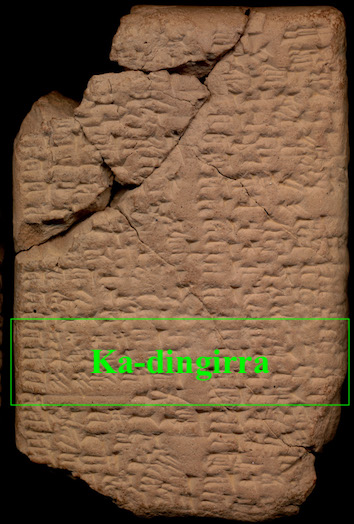Ehilikalama (temple of Ašratu at Babylon)

According to Tablet IV of the scholarly compendium Tintir = Babylon, Ehilikalama, the temple of the goddess Ašratu, was one of the four temples located in the Ka-dingirra district of East Babylon. Based on circumstantial evidence, Temple D II — a small 260-m² building constructed between Eniggidrukalammasuma (the temple of the god Nabû of the harû) and the Processional Way that was excavated and partly reconstructed in 1979–81 by Iraqi archaeologists led by Danial Ishaq — has been tentatively identified as Ehilikalama.

Names and Spellings
This temple at Babylon went by the Sumerian ceremonial name Ehilikalama, which means "House of the Luxuriance of the Land."
- Written Forms: e₂-ḫi-li-kalam-ma.
Known Builders
At the present time, no certain builders of Ehilikalama are known from extant cuneiform sources. Given its location, it seems plausible that the Neo-Babylonian king Nebuchadnezzar II (r. 604–562 BC) might have work on it.
Building History
No information about the building history of the goddess Ašratu's temple at Babylon are known at this time.
Archaeological Remains
The remains of Temple D II were excavated and partly reconstructed by Iraqi archaeologists in 1979–81; that team was led by Danial Ishaq. The ruins of this building, which are located in the area of Babylon known today as Sahn, have been very tentatively identified as belonging to Ehilikalama. This proposal is based on the fact that the other three temples of the Ka-dingirra district mentioned in Tintir = Babylon Tablet IV have been positively identified. Alternatively, it has been suggested that Temple D II could have been a temporary temple of the god Nabû that had been used while his main temple (Eniggidrukalammasuma) was being rebuilt.
Few details have yet been published about this small temple, which measured a mere 260 m², apart from the fact that the cella was located south of the central courtyard and that school tablets written by scribes in training were discovered inside it.
Further Reading
- Cavigneaux, A. 2013. "Les fouilles irakiennes de Babylone et le temple de Nabû ša ḫarê: Souvenirs d'un archéologue débutant," in B. André-Salvini, (ed.), La tour de Babylone: Études et recherches sur les monuments de Babylone. Actes du colloque du 19 avril 2008 au Musée du Louvre, Paris, Rome, pp. 65–76.
- George, A.R. 1992. Babylonian Topographical Texts, (Orientalia Lovaniensia Analecta 40), Leuven, pp. 312–313.
- George, A.R. 1993. House Most High. The Temples of Ancient Mesopotamia (Mesopotamian Civilizations 5), Winona Lake, p. 99 no. 463.
- Pedersén, O. 2021. Babylon: The Great City, Münster, pp. 180–181.
Banner image: Annotated satellite image of the Ka-dingirra district of East Babylon, including Ehilikalama (left); photograph of the reconstructed Ašratu temple taken in December 2018 (right); Image created by Jamie Novotny from O. Pedersén, Babylon: The Great City, p. 181 fig. 4.38.
Jamie Novotny
Jamie Novotny, 'Ehilikalama (temple of Ašratu at Babylon)', Babylonian Temples and Monumental Architecture online (BTMAo), The BTMAo Project, a sub-project of MOCCI, [http://oracc.org/btmao/Babylon/TemplesandZiggurat/Ehilikalama/]